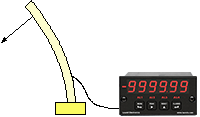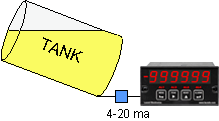Process & Ratiometric Meter Applications
Ratiometric potentiometer follower application
In this application shown, the signal from a sliding contact voltage divider can be converted to engineering units such as position, level or percentage. By operating in a ratiometric mode, the meter automatically removes any effects caused by variations in the excitation supply. Connect excitation return to signal return, and jumper the excitation output to 5 Vdc.
  |
 |
Powering two-wire transmitters |
Testing with peak detection |
 |
 |
Custom curve linearization |
Rate from successive readings |


